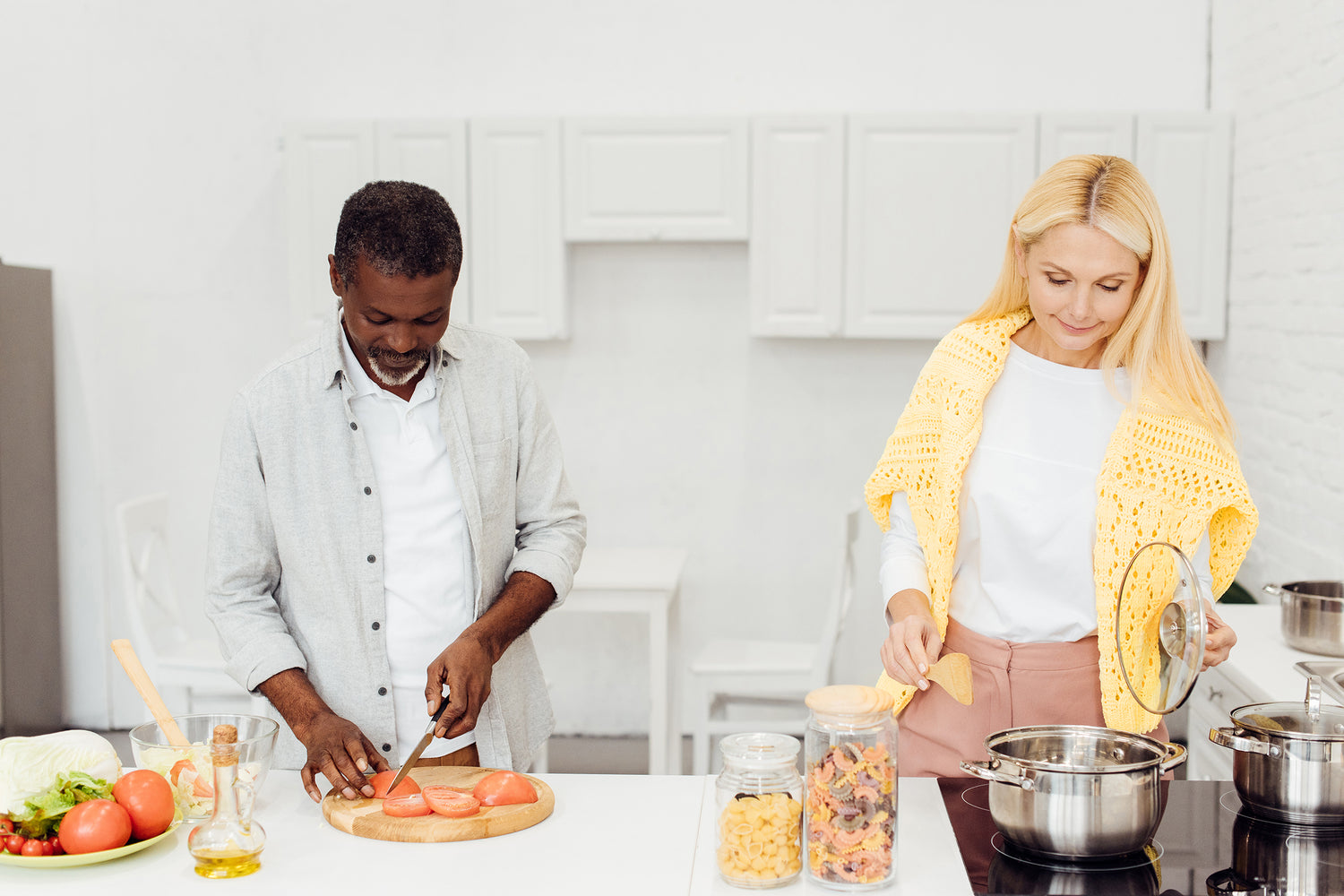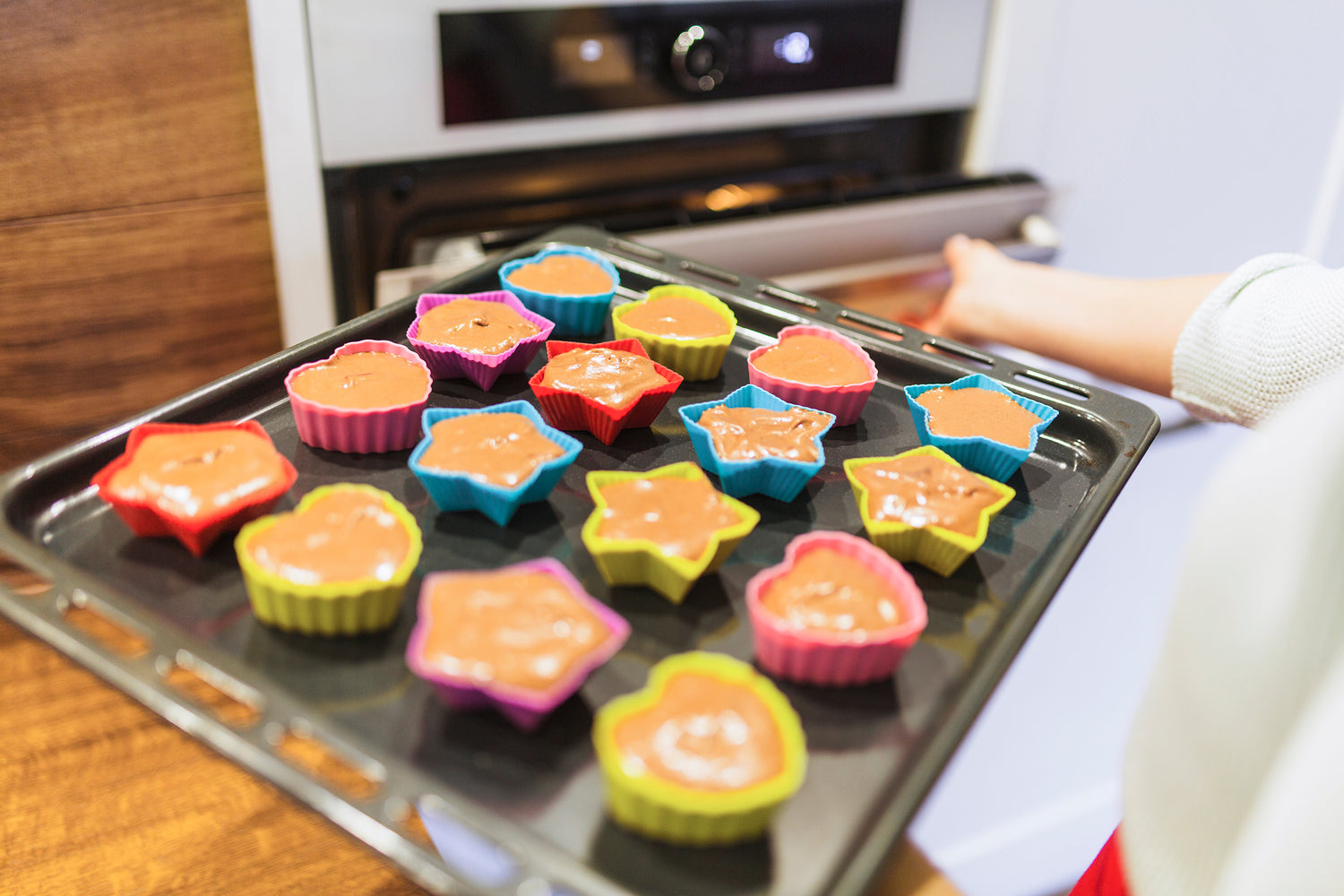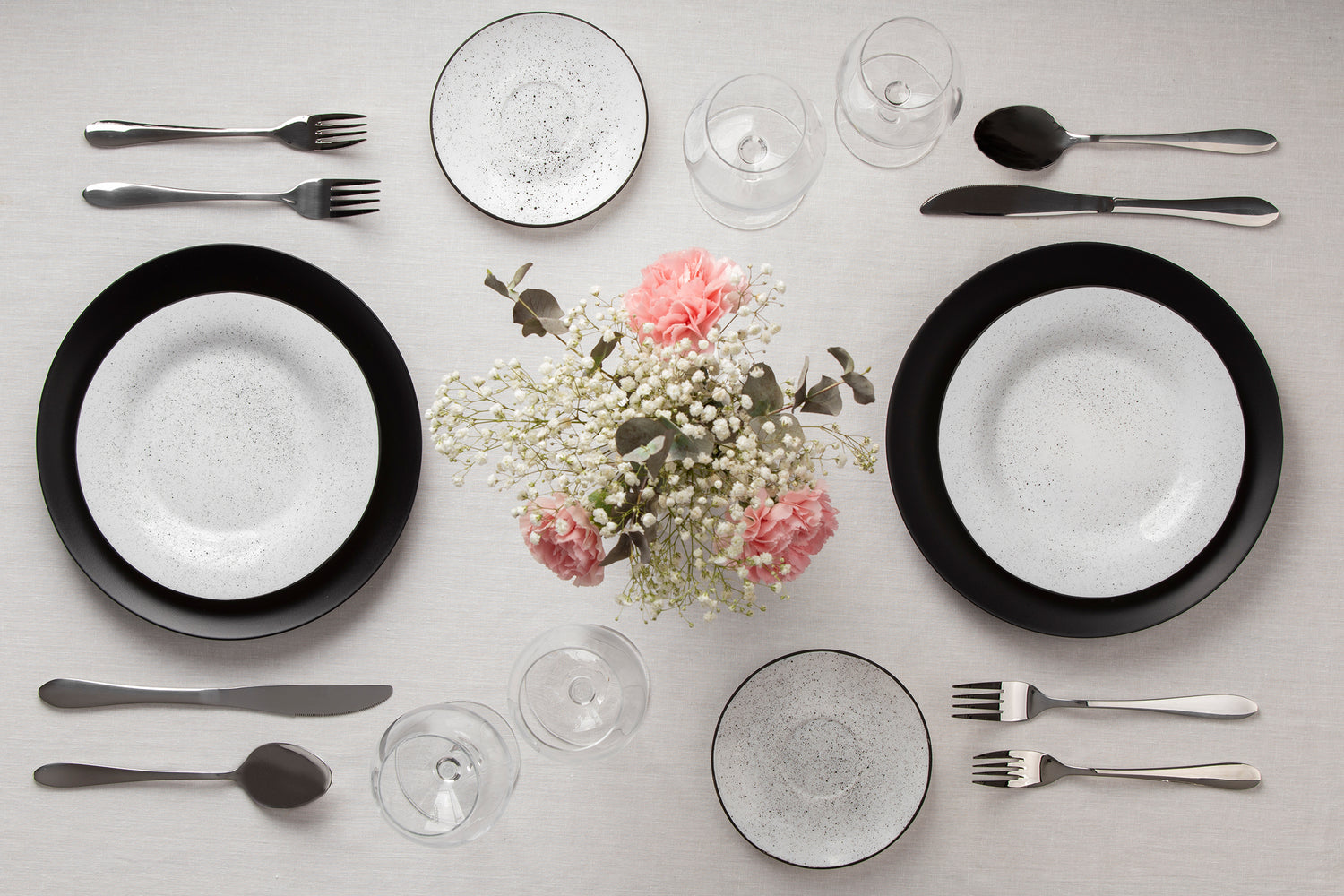Are you hosting a dinner party or a special occasion and want to create an elegant and inviting table for your guests? Mastering the art of table setting is the key to creating a memorable dining experience. This step-by-step guide will walk you through setting a table like a pro. Whether you're a seasoned host or a beginner, these tips and tricks will help you create a stunning table to impress your guests. So, let's delve into the world of table setting and unlock the secrets to creating a visually stunning and functional table.
The Importance of Table Setting
Setting the table goes beyond just placing plates and cutlery. It sets the tone for the dining experience and reflects your attention to detail and hospitality. A well-set table adds elegance to your event and creates a sense of anticipation for the delicious meal that awaits.
When guests sit at a thoughtfully arranged table, they feel special and valued. It shows that you have taken the time and effort to create a beautiful environment for them. A beautifully set table also enhances the overall ambiance of the room and elevates the dining experience to new heights.
Table setting is an art form that allows you to express your creativity and personal style. Whether you prefer a classic and formal setting or a more relaxed and casual one, the way you set your table speaks volumes about your taste and attention to detail.
Step-by-Step Guide to Set a Formal Table

This detailed arrangement is usually set for formal wedding dinners and significant events that call for traditional silverware etiquette. It requires a complete tabletop set.
You'll need a tablecloth and/or placemat, dinner plate, salad, and soup plates, a set of cutlery (dinner knife, fish knife, salad knife, dinner spoon, dinner fork, fish fork, salad fork, butter knife), bread plate, water glass, wine glass, and a napkin.
Here's the step-by-step table setting guide for formal occasions:
- Place the dinner plate at the center of each setting.
- Position the salad plate and then the soup plate on the dinner plate.
- Set the dinner fork to the left of the plate, tines pointing upward and outward. Keep the salad fork to the left of the dinner fork. If there's a fish course, position the fish fork between the salad and dinner forks.
- Place the dinner knife to the right of the plate, blade facing toward the plate. For a fish course, place the fish knife to the right of the dinner knife. Next, set the salad knife to the right of the fish knife. The dinner spoon should be at the right of the salad knife. If there are oysters, place the oyster fork to the right of the dinner spoon.
- Set the bread plate just above the forks, slightly inward, maintaining an equal distance from the dinner plate and the top of the napkin.
- Place a bread knife on the bread plate, blade facing inward toward the plate.
- Above the dinner plate, position the dessert fork and spoon. Ensure the handle of the spoon points right and the handle of the fork points left.
- Adjust the drinking glass directly above the dinner knife for easy access.
- Position the red wine glass northeast of the drinking glass and the white wine glass in front of or between them, ensuring easy reachability for all three.
- For the napkin, fold it inside a ring, place it to the left of the forks, or fold it and place it on the plates. Some professionals prefer presenting the napkins on a plate to minimize disruptions when guests retrieve them.
- Finally, position the place cards above the dessert spoon, featuring names on both sides. Surround the place card holder with a salt shaker on the left and a pepper shaker on the right, creating a balanced touch.
And more tips to help you create a visually stunning formal table:
- Color Scheme: Choose a color scheme that complements your theme and event. Stick to two or three colors to create a cohesive look. Consider the colors of your dinnerware, napkins, tablecloths, and centerpieces when selecting your color scheme.
- Layering: Layering adds depth and visual interest to your table setting. Use charger plates, placemats, or table runners to create layers and dimensions. Experiment with different textures and patterns to create a unique, eye-catching table arrangement.
- Mix and Match: Don't be afraid to mix and match different dinnerware and glassware. Combine different patterns and styles to create a personalized and eclectic table setting. Just make sure that the pieces coordinate well together and maintain a cohesive look.
- Proper Placement: Pay attention to the placement of each item on the table. Ensure that everything is aligned and evenly spaced. Use a ruler or measuring tape if needed to achieve precision.
- Height Variation: Vary the height of your centerpiece and other decorative elements to create visual interest. Use candlesticks, vases, or cake stands to add height and dimension to your table. Just make sure that the taller items are placed towards the center or ends of the table to avoid obstructing your guests' view.
- Personalized Touches: Add personal touches to your table setting to make it unique and special. Place personalized name cards or small favors at each place setting. Incorporate elements that reflect your personality or the theme of your event.
With these tips in mind, you'll be well on your way to creating a visually appealing table setting that will leave a lasting impression on your guests.
Step-by-Step Guide to Set a Casual Table

Special occasions call for unique table settings. Whether you're hosting a birthday party, a holiday gathering, or a themed event, there are endless possibilities to explore. Here are steps for setting a casual table:
You'll need a tablecloth and/or placemat, dinner plate, salad, and soup plates, a set of cutlery (dinner knife, dinner spoon, dinner fork, salad fork), water glass, wine glass, and a napkin
- Start by positioning a dinner plate on the placemat.
- Lay a salad plate on top of the dinner plate, then place the soup bowl on top of these plates.
- Set the dinner fork to the left of the plate, tines pointing upward and outward. Keep the salad fork to the left of the dinner fork.
- Place the dinner knife to the right of the plate, blade facing toward the plate. Then set the dinner spoon to the right of the knife.
- Adjust the drinking glass directly above the dinner knife for easy access.
- Position the red wine glass northeast of the drinking glass and the white wine glass in front of or between them, ensuring easy reachability for all three.
- For the napkin, fold it and place it under the fork or on the plate. Some professionals prefer presenting the napkins on a plate to minimize disruptions when guests retrieve them.
More tips to help you create a visually stunning casual table:
- Rustic Charm: If you're hosting a cozy gathering or a rustic-themed event, embrace the charm of nature in your table setting. Consider using a linen table runner instead of a tablecloth for a more relaxed and natural look. Incorporate elements such as wooden chargers, mason jar glasses, and burlap napkins. Enhance the rustic atmosphere with wildflowers or small potted plants as centerpieces. Add a touch of elegance with vintage-inspired dinnerware and candle holders. This style of table setting exudes warmth and simplicity.
- Tropical Paradise: Transport your guests to a tropical paradise by incorporating vibrant colors, exotic flowers, and tropical-inspired dinnerware. Use palm leaves or tropical fruits as decorative elements. Don't forget to serve refreshing tropical drinks to complete the theme.
- Elegant Black and White: Opt for a black and white color scheme for a timeless and sophisticated look. Use black charger plates, white dinnerware, and black and white striped napkins. Add a touch of glamour with silver or gold accents.
- Nautical Vibes: Bring the beach to your table with a nautical-inspired setting. Use blue and white striped tablecloths or placemats, anchor-shaped napkin rings, and seashell centerpieces. Serve seafood dishes to complement the theme.
- Garden Party: Create a whimsical and enchanting table setting with a garden party theme. Use floral tablecloths, pastel-colored dinnerware, and delicate flower arrangements. Incorporate garden-inspired elements such as bird cages, butterflies, and fairy lights.
These are just a few ideas to spark your creativity. Mix and match different themes and elements to create a table setting that perfectly suits your event and personal style.
Etiquette Tips for Creating a Visually Appealing Table Setting
Proper table setting etiquette is important to create a polished and sophisticated dining experience. Here are some essential etiquette tips to keep in mind:
- Napkin Etiquette: Place the napkin on your lap once seated. Use it to dab your mouth or fingers, but avoid using it as a tissue. Place the napkin loosely folded on the chair when leaving the table temporarily. At the end of the meal, leave the napkin unfolded to the left of the plate.
- Utensil Usage: Start using the utensils from the outermost side and work your way in with each course. Avoid switching utensils once you have used them. Place them on the plate or napkin between bites and when finished with the course.
- Glassware Etiquette: Hold the stem of the wine glass to avoid leaving fingerprints on the bowl. When toasting, make eye contact with each person and raise your glass slightly. Take small sips of wine rather than gulping it down.
- Bread and Butter: Tear off a small piece of bread and butter it individually rather than buttering the entire slice. Place the bread on the bread plate or to the left of the dinner plate.
- Conversations and Cell Phones: Engage in polite conversations with your fellow guests, and avoid using cell phones at the table unless it's an emergency. Show respect and attentiveness to your dining companions.
Table Setting Common Mistakes to Avoid
While it's essential to follow the table setting etiquette, it's equally important to avoid common mistakes that can detract from the overall dining experience. Some common mistakes to avoid include:
- Overcrowding the Table: Avoid cluttering the table with too many decorative elements or unnecessary items. While creating an aesthetically pleasing table is important, leaving enough space for your guests to enjoy their meals comfortably is equally important. Avoid cluttering the table with excessive decorations or oversized centerpieces obstructing conversation or the view across the table.
- Mismatched Dinnerware: Ensure that the dinnerware and glassware coordinate well. Avoid using mismatched pieces that can create a disorganized and chaotic look.
- Improper Placement: Pay attention to the placement of each item on the table. Ensure that everything is aligned and evenly spaced. Avoid placing items too close to each other, as it can make the table look cluttered.
- Neglecting Tablecloth and Napkin Care: Always ensure that the tablecloth, napkins, and placemats are clean and free from stains. Dirty or stained linens can detract from the overall elegance of the table setting. Ensure that the tablecloth is appropriately sized and hangs evenly on all sides of the table. Napkins should be folded neatly and placed to enhance the overall table arrangement.
Following proper table setting etiquette and avoiding common mistakes will create a seamless and enjoyable dining experience for your guests.
Creative Table Setting Ideas for Special Occasions

Table setting accessories and decorative elements add the finishing touches to your table arrangement. Here are some popular options to consider:
- Candlesticks: Candlesticks add a touch of elegance and ambiance to your table setting. Choose tall or short candlesticks depending on the height of your centerpiece and the overall atmosphere you want to create. Use unscented candles to avoid overpowering the aroma of the food.
- Place Cards: Place cards are a great way to assign seats and add a personalized touch to your table setting. Use decorative place card holders or get creative using natural materials such as twigs or leaves.
- Menu Cards: Menu cards can be placed at each table setting to inform guests about the courses served. Use elegant card holders or incorporate them into the overall design of the table setting.
- Table Runners: Table runners add a pop of color and texture to your table. They can be used alone or with a tablecloth to create layers and visual interest. Choose a table runner that complements your overall theme and color scheme.
- Napkin Rings: Napkin rings are a simple and effective way to add style and sophistication to your table setting. They come in various materials and designs, allowing you to customize the look to suit your event.
Table setting is an art that allows you to express your style and set the ambiance for your event. Whether you prefer a formal, rustic, or themed approach, the key is to create a visually appealing and cohesive table arrangement that complements the occasion.
Paying attention to these table setting etiquette guidelines and avoiding common mistakes create a visually pleasing and functional table that enhances your guests' dining experience.





